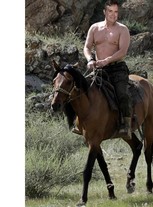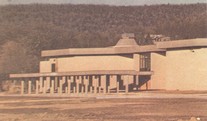
Virgil Grissom High School

User Forums
| Forum: Best School Hijink you ever pulled off | |||||
|
|||||
|
Tom Morse
 Posts: 2 View Profile |
Chem II Posted Tuesday, June 10, 2014 04:23 PM As you enter the front door of Grissom high, to the right, there is or at least was, a pod specifically devoted to the sciences. Nurturing minds were fed and developed here leading to understandings of the universe that follow them to this day. Two rooms in particular are of interest. The first, the chemistry II room, was the typical room, periodic table on the wall, homework assignments on the board and desks laid out, two students per table, dispersed so as not to be in alignment. This enabled the teacher, Mrs. Hill, access to roam about the room without impedance. This room is not the one of interest, at this time, for the adjacent room, THE LABORATORY, is the one of significance The laboratory: a room of dreams, a room of combat. Bunsen burners, beakers, test tubes, water troughs, qualitative analysis books, but most of all, chemicals were the instruments of this warfare. These chemicals were to be used for various experiments and analysis, but sometimes, teenage inquisitiveness and guile would find other uses, not necessarily in the spirit of higher education. The combatants were Scott Little, Calvin Blevins and myself. On any given day, the prescribed lab apparel would include safety glasses and a plastic apron. Due to the defensive nature of the situation, a plastic apron would also be worn protecting ones backside, for far too often a wet spot, really, a large wet spot, would adorn ones clothes as the period ended. Alliances were often made, and broken depending on the situation, but one item was always on trial, Calvin’s qualitative analysis book. It was the receptor of any and all experimental fluids, those with an acidic property most frequently used. Back pages were compromised first so as not to evoke too much undue attention. On one given day, the weapon of choice was butyric acid. If a gathering of revelers at a Cinco de Mayo celebration were to simultaneously get violently ill in a crowded elevator, one could experience the aroma that butyric acid released. Its scientific use in the classroom has long since been forgotten, but on one occasion, it was used to ascertain the effects on shoe leather, Calvin’s shoe. A small amount, less than a few spoonfuls, was covertly placed on the top of Calvin’s shoe and like other experiments, an amount of curing time was allowed. Unfortunately, there was nowhere to record our observations, other than in our memory, but the following results were noted. The color of leather reduces by about four shades, the cotton liner generally worn on ones’ foot inside the shoe vanishes, and skin turns a wondrous shade of green. A great added benefit is the shoe retained its pungent odor throughout the day. The attitude of the recipient of this experiment was less than enthusiastic and a scheme of repayment was hatched. The Chemical warfare option! One of the most potent analysis agent Chem II students used was aqua regia. This compound was the combination of two powerful acids and was used to dissolve metals such as gold. This would be the weapon of choice. Secretly acquiring a test tube full of this chemical compound, Calvin carefully placed it, corked to prevent spills, in the zippered pencil holder in his notebook, waiting for the perfect moment to rain destruction on Scott and myself. Unlike vials of nitroglycerine which warn of undue agitation, no such warning was available to describe effects of aqua regia. After the following period, sensing a prime opportunity to act, Calvin returned to his locker to retrieve said notebook. Approaching, Cal noticed a whiff of smoke emanating from his locker and with further investigation found it arising from his notebook. An unfortunate consequence of transporting aqua regia was discovered, it is highly volatile. Not only will it explode in a test tube but it will also eat away all metal objects it contacts; zippers and notebook rings to be precise. Back to the before mentioned Chemistry II classroom. The qualitative analysis workbook was necessary for aiding and logging results of chemical analysis. It also had the copyright of one Mrs. Hill whose spent numerous and laborious hours on its authoring. One of these manuals, previously mentioned, owned by Calvin, succumbed to experimental demise. Its pages were as brittle as very fine pencil lead, and would disperse like a dandelion in a stiff wind. Having purchased a new manual, Cal left the old one laying, still smoking, on a table in the combat room. Not having a very good day, Mrs. Hill discovered this abandoned notebook and marched into the classroom, threading herself between the tables, holding and shaking said notebook above her head, demanding the owner reveal him or herself. As a mild winter snowstorm graces the land with its flakes, so also was the classroom adorned. Feathery flakes of chemically treated paper floated casually to the floor. It took the will of Odysseus not to break up laughing as Cal reluctantly confessed. This is just one of the many high school events that, as one looks back on those days, makes me wonder how we survived. |
||||
|
|||||




